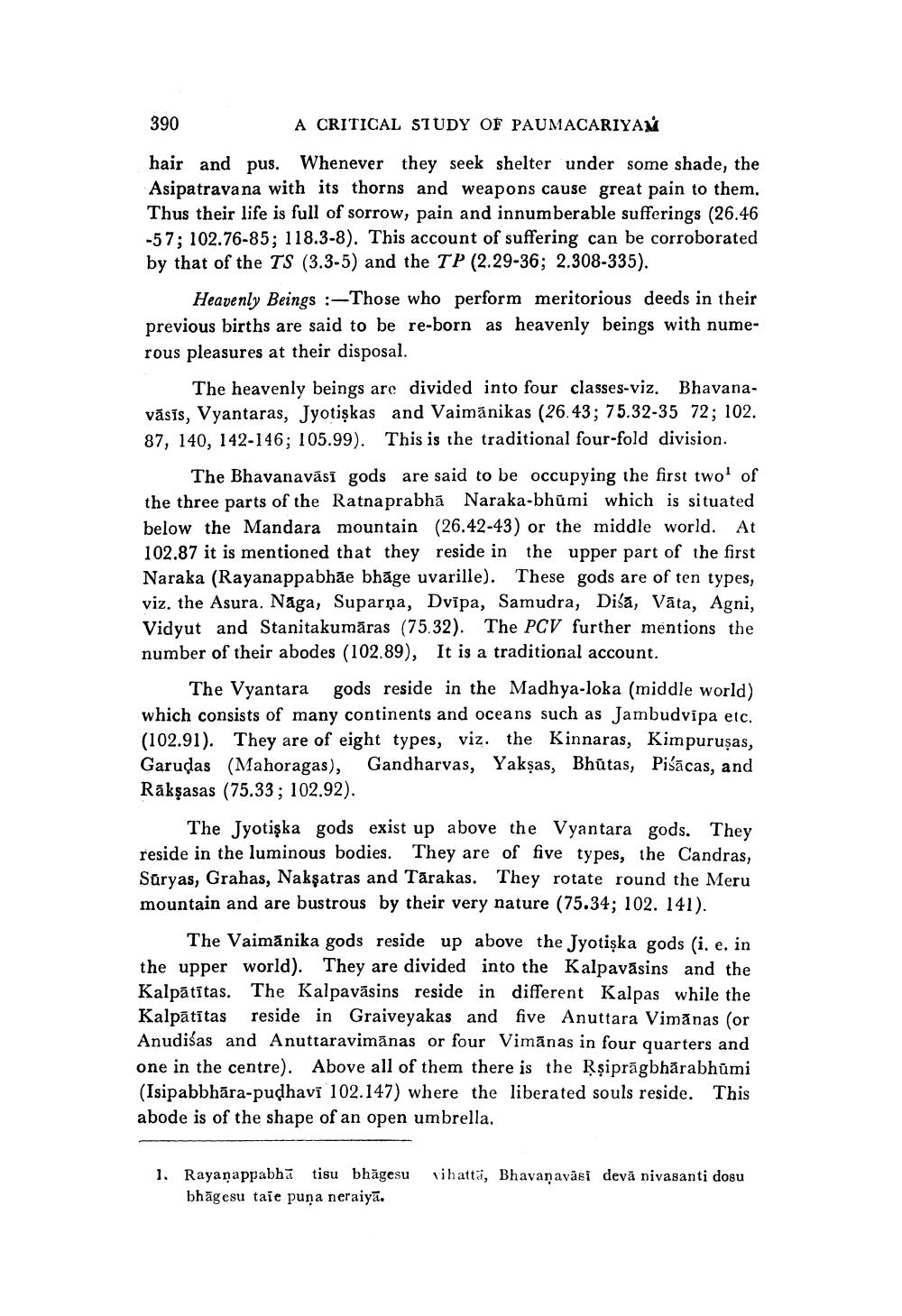________________
390
A CRITICAL STUDY OF PAUMACARIYAM
hair and pus. Whenever they seek shelter under some shade, the Asipatravana with its thorns and weapons cause great pain to them. Thus their life is full of sorrow, pain and innumberable sufferings (26.46 -57; 102.76-85; 118.3-8). This account of suffering can be corroborated by that of the TS (3.3-5) and the TP (2.29-36; 2.308-335).
Heavenly Beings :-Those who perform meritorious deeds in their previous births are said to be re-born as heavenly beings with numerous pleasures at their disposal.
The heavenly beings are divided into four classes-viz. Bhavanavāsīs, Vyantaras, Jyotiskas and Vaimānikas (26.43; 75.32-35 72; 102. 87, 140, 142-146; 105.99). This is the traditional four-fold division.
The Bhavanavāsī gods are said to be occupying the first two of the three parts of the Ratnaprabha Naraka-bhumi which is situated below the Mandara mountain (26.42-43) or the middle world. At 102.87 it is mentioned that they reside in the upper part of the first Naraka (Rayanappabhāe bhāge uvarille). These gods are of ten types, viz. the Asura. Naga, Suparņa, Dvīpa, Samudra, Diśā, Vāta, Agni, Vidyut and Stanitakumāras (75.32). The PCV further mentions the number of their abodes (102.89), It is a traditional account.
The Vyantara gods reside in the Madhya-loka (middle world) which consists of many continents and oceans such as Jambudvipa etc. (102.91). They are of eight types, viz. the Kinnaras, Kimpuruṣas, Garudas (Mahoragas), Gandharvas, Yakṣas, Bhūtas, Pisacas, and Raksasas (75.33; 102.92).
The Jyotişka gods exist up above the Vyantara gods. They reside in the luminous bodies. They are of five types, the Candras, Suryas, Grahas, Nakşatras and Tārakas. They rotate round the Meru mountain and are bustrous by their very nature (75.34; 102. 141).
The Vaimanika gods reside up above the Jyotişka gods (i. e. in the upper world). They are divided into the Kalpavasins and the Kalpātītas. The Kalpavāsins reside in different Kalpas while the Kalpātītas reside in Graiveyakas and five Anuttara Vimanas (or Anudiśas and Anuttaravimānas or four Vimanas in four quarters and one in the centre). Above all of them there is the Rṣiprāgbhārabhūmi (Isipabbhāra-pudhavi 102.147) where the liberated souls reside. This abode is of the shape of an open umbrella.
1. Rayanappabha tisu bhāgesu vihatta, Bhavanavasi deva nivasanti dosu bhagesu taie puna neraiya.




